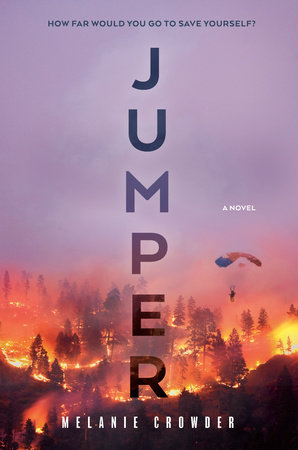Today I am thrilled to have my dear friend and VCFA roommate, Melanie Crowder, here at Creative Chaos to celebrate the launch of her debut middle grade novel, PARCHED!

Shop Indie Bookstores
Link to the first few chapters of the book!
When I was 17 I took a “gap” year and worked for an organization called American Rivers. American Rivers works to preserve 1% of America’s rivers as free flowing, not dammed or channeled, using the Wild and Scenic Rivers Act. During my time at the organization, I learned that water for Denver, Colorado came from dammed rivers far away. I was an East coast girl. I had no ideas that there was any problem getting water. Step one. Turn on tap. Step two. Drink, water garden, wash car, etc. Turns out that my experience was not universal. (Figuring this out is part of growing up, right?)
Millions of people lack safe water right now.
Some people see water as a human right and others see water as a commodity. Still lack of clean water affects humans no matter their socio economic level. It is essential. So, I’ve asked Melanie to take a break from talking specifically about her book. You can find SO much more about her book and her experience as an author at other stops on her fabulous blog tour.
Today, we are going to talk about H2O.
Melanie, thank you so much for being here!
Thank you, Anna!
Living with you was such an education. You live right here in the good old US of A, on Colorado’s Front Range and in Colorado, and EVERYONE is concerned about water. What water limitations do you experience living in Denver?
I grew up in Oregon, where between lakes and rivers and the mighty Pacific, there is no shortage of water to dip your feet or your whole body into. When I moved to Colorado over ten years ago, it was the strangest thing—on a summer day nearing 100˚, I couldn’t find a single place to cool off in the water. The creeks were too shallow for swimming, the rivers in town were too polluted (here is an article on the Platte River’s sordid history), and to my amazement, many of the reservoirs were fenced off specifically to keep people out. Sure, I had read Cadillac Desert in college, but now I was living in it, and for a west coast girl with no place nearby to swim that wasn’t a concrete box filled with chlorine, I may as well have been in the middle of the apocalypse!
How is water rationed in drought conditions?
Water isn’t rationed here, so much as divvied up. I can run the water inside my house all day if I want, because I have paid for it. But it is illegal for me to collect water from my roof and use it to water my tomato plants. That water belongs to someone who has a deed for the creek at the end of my street. Colorado water laws date back to pioneer days, when ranchers and farmers diverted rivers into miles of irrigation ditches and dammed reservoirs to keep their crops and herds alive through the scorching summers. Hence, every drop of water that falls from rainclouds or melts from peaks 14,000 feet high is owned by someone.
Unfortunately, old ways die hard. And we’re still making changes in a reactionary way. Rather than enforcing consistent rationing policies, we wait for a severe drought to limit the duration and time of day when people can water their lawns.
Colorado is made up of transplants from all over the country—people who have been drawn here by the mountains and our work hard/play hard way of life. And all of us transplants have to adjust to the fact that it just doesn’t rain here like it does on the coasts where we came from. (And that having a lawn in the high desert is in itself a ridiculous concept!)
What if you just don’t follow the rules?
You can get a ticket, but honestly, I don’t think people are paying much attention to the restrictions. We’re still a long way from where we should be. It’s going to take a big cultural shift for people here to see water as a thing to be preserved, instead of a thing to be used.
…but I am beginning to see more xeriscape cropping up, and the laws are very slowly evolving. And I have to hope that discussions like this will raise awareness, sound the alarm, and bring about change. Here is an article that paints a frightening picture for the entire Western US if we don’t begin to take water conservation much more seriously.
Water in a drought-ridden area could be leveraged as power. How is water used to exploit and control in PARCHED?
In PARCHED, to quote Megan Cox Gourdon of the Wall Street Journal, “fresh water is not so much the coin of the realm as the only thing of value.” To give you a little backstory for how PARCHED’s setting came to be so dire, first mining poisoned the aquifer under the city that the people relied on for drinking water, while rising sea levels turned the coastal river brackish and displaced entire communities. Then a drought hit and wells dried up. Chaos resulted. Anyone with the means to flee did, leaving the city to be ravaged by gangs.
These gangs controlled what little water was left. When a society collapses in on itself like this, it is the children who suffer most. That is where PARCHED begins, with two children whose lives have been utterly devastated; two children who must battle their grief, their instinct to distrust, and the elements if they are going to survive.
I’ll point you to another article, this one about water in Yemen. When I was writing PARCHED, at times it was almost as if I flinched while I typed. I knew, because of the research I had done on my book’s setting, that the premise was frighteningly realistic. I didn’t want it to become real. I want us as a global society to pull back from the edge and set a different course before we go sailing over that cliff.
People who are working in water engineering and education suggest a Multi part solution to bring clean water to those who don’t have it that includes technology, education, empowerment, and accountability. What examples of this do you see in Denver?
Technology: Just this spring, the Colorado legislature passed a greywater bill that is a big step in the right direction. Put simply, greywater is the process by which water at a facility is used more than once before it is sent to the treatment plant. For example, the water that goes back down the drain at a drinking fountain can be used a second time to water the trees at a park. In a home, rinsewater from a washing machine or shower drain (in which biodegradable products are used) could be diverted for landscape irrigation.
Education: Denver Water has been working to change water consumption habits through advertising campaigns for years. Denver Public Schools has an entire sustainability department.
Empowerment: Citizens are working to keep Hydraulic Fracturing at bay, and municipalities are working to ban the practice within their boundaries. (Read more about the issue here.)
Accountability: This is the big question mark. We have a stubborn streak in the Mountain West. As CO State Senator Chris Romer said, after a failed attempt to pass a rainwater harvesting bill, “Welcome to water politics in Colorado. You don’t touch my gun, you don’t touch my whiskey, and you don’t touch my water.”
What didn’t I ask you that you’d like to say?
Only that lately I hear people referencing “first world problems” and “third world problems” i.e. not being able to find the right shoes to go with that dress versus not having access to indoor plumbing. I don’t love these terms (though I think people use them to remind themselves to be grateful for our quality of life; to not sweat the small stuff). I think these terms are one more way of putting people into “us” and “them” categories. But I’ll use those terms now, because I think they fit the way we think about water.
We think of water as a third world problem. A problem that “they” have, “over there.” But water is everybody’s problem. Sure, there are degrees. Many people in the developing world don’t have access to clean running water, which leads to problems ranging from child mortality to a lack of educational opportunities for girls. However, in this country, where access to running water is taken for granted, the purity of that water absolutely should not be taken for granted. Our way of life is poisoning our fresh water supply—from prescription drugs and pesticides to oil and gas exploration. This is a problem for all of us, in every corner of the globe. It’s a problem that deserves our attention.


 If you haven’t picked up an award-winning volume by Melanie Crowder
If you haven’t picked up an award-winning volume by Melanie Crowder 




